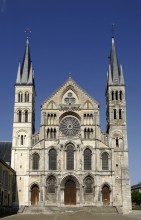The term 'Gothic' has a number of applications. It can refer to everything from a particular type of architecture through to a modern-day sub-culture.
The Goths
One example of the term 'Goth' or 'Gothic' applying to a specific group of people is in reference to the Goths who inhabited Eastern Germany and whose roots can be traced back to Scandinavian migrants of the 6th Century. Etymologically, the term 'Goth' originates from an area known as Gotland in Sweden, where the tribes of Goths had their roots.
These Goths became divided into two distinct groups: Ostrogoths and Visigoths, both of whom played a role in the collapse of the Roman Empire and the emergence of Medieval Europe.
The term Gothic is therefore applied to the culture, language and literature of these people.
Gothic art and architecture

Gothic art is a general term that is used to describe an art form originating in Medieval Europe, specifically between the Romanesque period and the emergence of Renaissance art. Its origins are attributed to artistic movements of 12th Century France but spread through most of Western Europe (although the phenomenon seemed to somewhat bypass Italy). The chief forms of Gothic art were sculpture, panel painting, stained glass and fresco.
As a form of Architecture, the Gothic style is attributed to the same period and was contemporaneously known as 'Frankish work'. Its most notable features were the pointed arches, buttressess and ribbed vaults that are displayed in cathedrals, abbeys and churches across Europe such as Reims Cathedral in France.
Gothic literature
The term 'Gothic' is also used to refer to a style of literature that combines the genres of horror and romance. The origin of Gothic literature is attributed to the English author Horace Walpole, and subsequent notable authors who followed in his footsteps include Clara Reeve and Anne Radcliffe. The term is also associated with Romantic authors such as Mary Shelley (author of Frankenstein) and seminal Victorian author Edgar Allen Poe.
Gothic sub-culture

In modern times, the term Goth or Gothic is most commonly applied to a sub-culture that is associated with particular music and fashion trends with a dark or sombre theme. Whilst authors like Poe and Shelley may have had some influence on modern-day 'Goths', more recent influences are the bands who formed the genre of 'post-punk' music that emerged in the United Kingdom in the early 1980s.